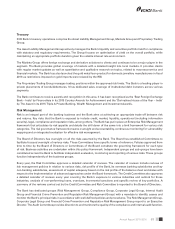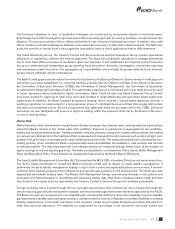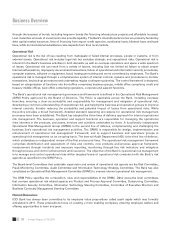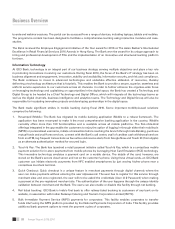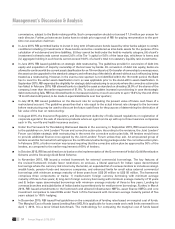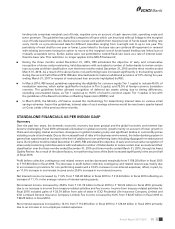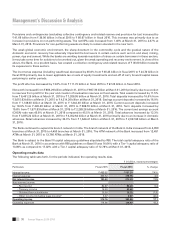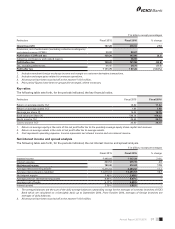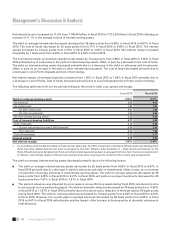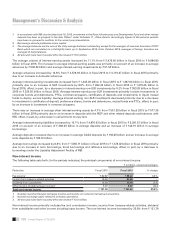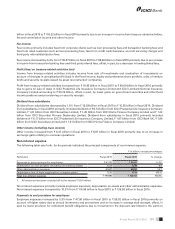ICICI Bank 2016 Annual Report Download - page 94
Download and view the complete annual report
Please find page 94 of the 2016 ICICI Bank annual report below. You can navigate through the pages in the report by either clicking on the pages listed below, or by using the keyword search tool below to find specific information within the annual report.
92 Annual Report 2015-2016
BUSINESS ENVIRONMENT
The global economic environment remained subdued during scal 2016. The U.S. Federal Reserve raised interest
rates by 25 basis points in December 2015, while other advanced and emerging economies continued to pursue an
accommodative monetary policy. The U.S. Federal Reserve thereafter kept interest rates stable in the subsequent monetary
policy statement and indicated that the rate increase would be gradual. There was a slowdown in economic growth in
China to 6.9% in calendar year 2015 compared to 7.3% in calendar year 2014, and a depreciation of the Chinese currency.
Commodity prices continued to weaken given low demand and excess supply. The price of the benchmark Brent crude
fell from US$ 55 per barrel at end-March 2015 to a low of US$ 28 per barrel around mid-January 2016 but recovered
thereafter to US$ 40 per barrel at end-March 2016. Metal prices also declined during the year. These developments
led to signicant volatility in global nancial markets. Several emerging market economies saw a depreciation of their
currencies during the period.
In India, economic activity during the rst nine months of scal 2016 showed a gradual improvement. India’s gross
domestic product grew by 7.5% during the rst nine months of scal 2016, compared to growth of 7.4% during the rst
nine months of scal 2015. As per industry-wise growth estimates (gross value added), the agriculture sector grew by
0.6%, the industrial sector by 7.4% and the services sector by 9.2% during the rst nine months of scal 2016 compared
to 0.3%, 5.9% and 10.7%, respectively, during the corresponding period of scal 2015.
Ination remained moderate during scal 2016. Retail ination, as measured by the Consumer Price Index (CPI), eased
from 5.3% in March 2015 to a low of 3.7% in July-August 2015, and increased subsequently to 4.8% in March 2016. Core
CPI ination, excluding food and fuel products, increased from 4.2% in March 2015 to 4.7% in March 2016. Ination, as
measured by the Wholesale Price Index (WPI), remained negative through scal 2016 and was -0.9% in March 2016.
With ination remaining within its target range, Reserve Bank of India (RBI) reduced the repo rate by 75 basis points during
scal 2016 with a 25 basis points reduction from 7.50% to 7.25% in June 2015 and another 50 basis points reduction to
6.75% in September 2015. This took the cumulative reduction in the repo rate since January 2015, when the policy rate
reduction cycle began, to 125 basis points. In April 2016, RBI has reduced the repo rate by a further 25 basis points to 6.50%.
Trends in merchandise trade remained muted during scal 2016. Exports declined by 15.6% to US$ 261.12 billion and
imports declined by 15.3% to US$ 379.60 billion. The decline was primarily due to continued weak global demand and low
global commodity prices. India’s Current Account Decit (CAD) was at 1.4% of gross domestic product during the rst nine
months of scal 2016. Foreign Direct Investment (FDI) improved to US$ 33.66 billion during the rst nine months of scal
2016 compared to US$ 24.80 billion during the corresponding period of scal 2015. There was a net outow of investments
by Foreign Portfolio Investors (FPIs) of US$ 3.99 billion during the rst nine months of scal 2016, with a net outow of US$
4.31 billion in equity markets and a net inow of US$ 0.32 billion in debt markets. The benchmark S&P BSE Sensex declined
by 9.4% during scal 2016 to close at 25,342. The Rupee depreciated from ` 62.3 per U.S. dollar at March 31, 2015 to ` 66.4
per U.S. dollar at March 31, 2016. Yields on the benchmark 10-year government securities remained in the range of 7.7% to
7.8% for most part of the year but eased towards the end of the year to 7.4% at March 31, 2016.
During scal 2016, the government announced several policy measures. A composite cap on foreign investments was
introduced which is applicable across all sectors and has brought different kinds of foreign investments under a single
combined limit. Further, the list of economic activities eligible for foreign investment under the automatic route was
expanded. In the area of nancial inclusion, apart from the Pradhan Mantri Jan Dhan Yojana which was announced in
scal 2015, the government announced several new schemes including pension and insurance schemes and a nancial
scheme for micro, small and medium enterprises. A scheme to support start-ups was also announced. During the year,
the rst 20 cities to be converted into Smart Cities were identied. With regard to the nancial sector, the ‘Indradhanush’
scheme for public sector banks was announced. Key proposals announced in the Union Budget for scal 2017 included
a plan to introduce a Comprehensive Code on Resolution of Financial Firms which together with the Bankruptcy Code
is expected to provide a strong resolution framework for banks; operationalising the Bank Board Bureau; and allowing
foreign investment in the insurance and pension sectors under the automatic route.
With regard to trends in banking, non-food credit growth remained subdued during scal 2016. Growth moderated from
12.7% year-on-year at April 3, 2015 to 10.3% at April 1, 2016. Credit growth was mainly driven by the retail segment.
Based on sector-wise credit deployment, growth in credit to industry was 2.7%, services 9.1%, retail 19.4% and agriculture
15.3% year-on-year at March 18, 2016. Deposit growth in the banking system also remained muted in the range of 9-12%
Management’s Discussion & Analysis



